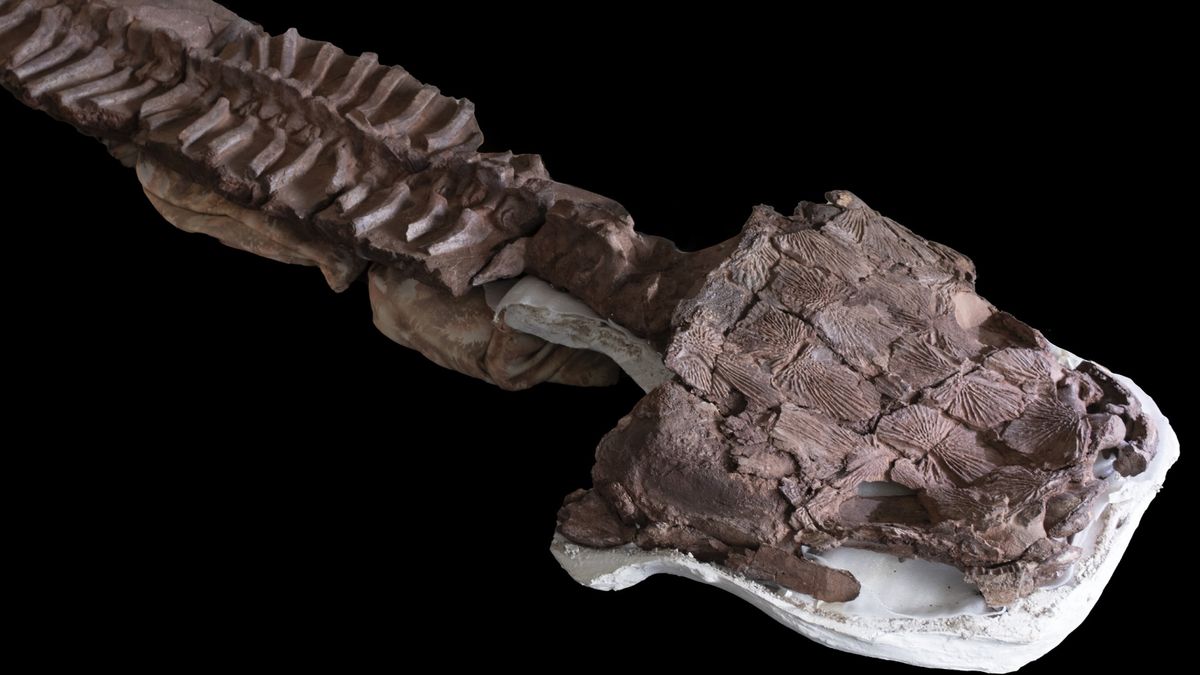Researchers in Namibia have discovered fossils from a huge, extinct swamp creature with a toilet seat-shaped skull.
Gaiasia jennyae existed around 280 million years ago — about 40 million years before the first dinosaurs evolved — and offers a glimpse into the early evolution of tetrapods, or four-limbed vertebrates.
Its skull was more than 2 feet (0.6 meters) long, and researchers estimate the entire animal could have been to 8.2 feet (2.5 m) long, potentially making it the biggest creature of its kind, according to a statement.
Researchers described the swamp creature in a study published Wednesday (July 3) in the journal Nature.
“Gaiasia jennyae was considerably larger than a person, and it probably hung out near the bottom of swamps and lakes,” study co-lead author Jason Pardo, a researcher at the Field Museum in Chicago, said in a separate statement.
Related: Stunning 3D images show anatomy of 500 million-year-old Cambrian trilobites entombed in volcanic ash
G. jennyae had interlocking jaws that enabled it to hunt for prey. The researchers believe it was likely the apex predator in its swampy ecosystem.
“It’s got a big, flat, toilet seat-shaped head, which allows it to open its mouth and suck in prey,” Pardo said. “It has these huge fangs, the whole front of the mouth is just giant teeth.”
The researchers discovered the fossils in the Gai-As Formation in northwestern Namibia, which was the southern part of the supercontinent Gondwana when G. jennyae existed. The team discovered fossils from four individuals, including skull fragments and a vertebral column.
“When we found this enormous specimen just lying on the outcrop as a giant concretion, it was really shocking,” study co-lead author Claudia Marsicano, a researcher at the University of Buenos Aires, said in the statement. “I knew just from seeing it that it was something completely different. We were all very excited.”
Around the time G. jennyae lived, modern-day Namibia was located further south, almost parallel to the northernmost point of Antarctica today, and an ice age was coming to an end.
While the land near the equator had begun drying up and new animals were evolving to fill niches, swamps closer to the poles remained, enabling animals to retain more primitive features..

G. jennyae is a stem tetrapod — an early vertebrate that exhibits intermediate characteristics between fish and the first true four-limbed tetrapods. Stem tetrapods still retained aquatic features like gills and had limbs that were not fully evolved for movement on land.
“It’s really, really surprising that Gaiasia is so archaic,” Pardo said. “It was related to organisms that went extinct probably 40 million years prior.”
G. jennyae shows how animals that existed further south were radically different from those nearer to the equator, Pardo said in the statement. Its success during this critical geological period could shed light on how the world was changing to support different forms of life.
“The more we look, we might find more answers about these major animal groups that we care about, like the ancestors of mammals and modern reptiles,” Pardo said.


